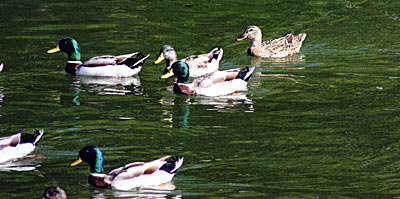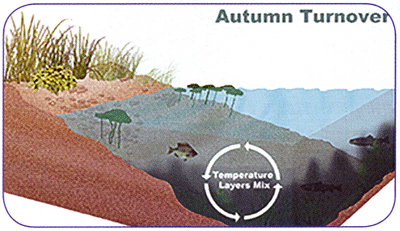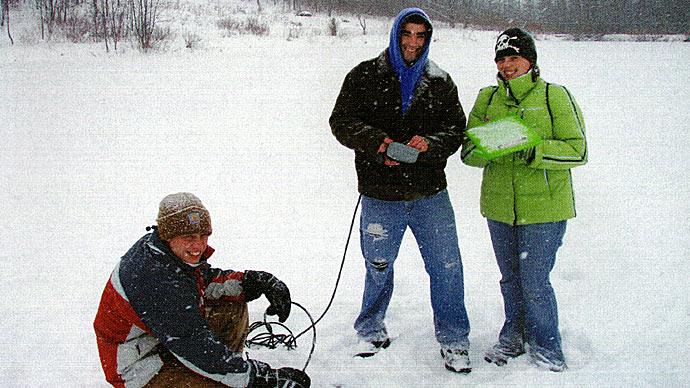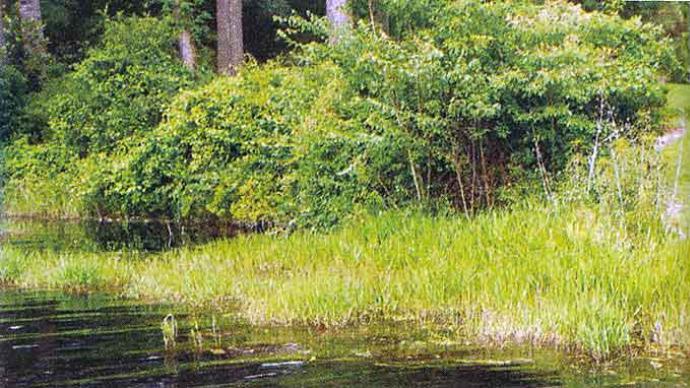
We don't know what we don't know, right? During my career as a fisheries biologist, I've met lots of people who have a sincere interest in learning as much as they can about how their ponds tick.
While almost everyone has heard of their ponds turning over; most don't truly understand what goes on and what the risks are.
Here are the basics.
Fact: Water density changes as its temperature changes. At 39° F, water is its densest. As water warms and cools from that temperature, it becomes lighter in weight and less dense. During spring, as days grow longer and the temperature rises, heat is forced into the water and expands it. But that heat can only go down as far as winds and currents can push it. Clear water accepts more heat than muddy water. As the days lengthen further, pond temperatures rise even more. Since heat prefers to rise at these temperatures, water forms layers beneath the surface. Soon, there will be three distinct, measurable layers. Biologists call the top layer the epilimnion. That's where the majority of productivity happens. That's where spawning occurs, plants grow, fish feed, plankton develops, and biology interacts with chemistry to take full advantage of spring and summer. That top layer absorbs oxygen via the atmosphere and photosynthesis from living plants. The top layer also pitches a little bit of oxygen to the middle layer called the thermocline, also called the metalimnion. That's a transitional layer between the top and bottom, which is called the hypolimnion. That middle layer, in spring, may be as thick as the two bottom layers, but tends to shrink as the summer melts into the hottest months. The thermocline is a transitional layer, absorbing gases and temperature influences from the top and bottom layers. The top of the thermocline may be five degrees cooler than water a few feet above it, and five degrees warmer than water two feet below it.
Here's another interesting fact. The thermocline tends to develop about halfway down. If your pond averages five or six feet of depth, and the deepest is 16-feet, expect the thermocline to be around eight feet deep.

The bottom layer has its own dilemma. It can't receive any oxygen, but it can receive all kinds of other stuff, courtesy of Mother Nature. It's the dumping ground of your pond. Organic matter from a variety of sources makes its way to the bottom. Decaying leaves from last fall, grass clippings from yesterday, fish waste, dead aquatic plants, dead phytoplankton, algae, zooplankton, and what ever else nature decides to pitch into the depths.
The bottom layer will be at least 10° F cooler than the top, often cooler than that. Remember water density? That bottom layer weighs much more than the warm epilimnion, so it's stuck there until the temperatures begin to change in the fall.
As summer progresses, our hypolimnion is busy at work, too. It uses its available oxygen to help compost all that organic stuff that's made its way into the depths. But there's a catch. That entire layer runs out of oxygen and goes from aerobic processes of breaking down all that organic stuff, to anaerobic, not nearly as fun and effective. Knowing the bottom layer can't receive oxygen also helps us understand that same water can't relieve itself of the gases which are a byproduct of breaking down that organic matter. While work below the thermocline doesn't necessarily come to a standstill, you can bet there's a buildup of stuff going on down there that has the potential to kill every living thing in your pond. Fish won't go into that bottom layer for long because they'll suffocate. Plants can't live there, it's too dark. They need sun. So, that bottom layer shifts and drags, almost like indigestion, waiting for its turn to, excuse me, please, uh, burp. When it can burp, it will relieve itself of all that natural buildup of gases and its composting process can proceed. That happens in the fall, when days are getting shorter and the temperature begins to drop. When the temperature of the top layer slides to the same temperature as the bottom layer, the thermocline yields and the two layers mix.
That's the turnover you so often hear about.
Here's where it gets to be a problem.
Think about it this way. The bottom half of your pond is probably less than a third of the entire volume of your pond. For most ponds, the top two to three feet constitute the same water volume as the rest of the pond. That's important. And, that's also a big reason why many of us in the pond and lake building business tell our clients to keep the depth reasonable. There's no reason to build a two-acre-pond fifty-feet deep. I got a call a few years back from a man who had a fish kill in his lake in south Texas. I started asking him about the lake and eventually drove there to look at it. When he started answering my questions, I took pause and asked him again, because I was convinced, he didn't hear me right. "How big and how deep?" was my question. "About 80 acres and 130 feet deep" was his answer both times I asked. Come to find out he'd bought an old abandoned uranium mine shaped like an ice cream cone with a spiral road all the way to the bottom, under water. He had a fish kill because his lake turned over and there was more water volume beneath the thermocline than above it. The anoxic water overwhelmed the happy water above, and literally sucked the air out of it. His fish didn't appreciate it much.

If your pond has lots and lots of organic matter, and if much of it is hot, such as what plops out of the south end of a north bound goose, when that stuff is flushed from the depths, your best water is now challenged to do the dirty work that the bottom layer couldn't finish. Thankfully, most of our ponds and lakes have enough healthy water volume at the top that it can absorb the nastiness from below and have minimal effect when that mixing time rears its head this fall.
There are all kinds of devices to mitigate these risks. Aeration is one of them. That's a big reason there are so many outstanding aeration companies out there. Aeration is an option to keep the hypolimnion at bay, and keep it deeper than it wants to be.
Another technique is to build an underwater island when you are building a pond. It's okay to have depth for adequate storage. By having an underwater island, you can effectively reshape the thermocline and push it away and around.
By far, the biggest problem with the hypolimnion is forcing its anoxic, toxic water to mix with the vibrant water above it.
Another problem with fall turnover is having a short time for your pond to deal with all those gases and breakdown of what's collected below. That's important, especially for northern waters where winterkill is a fear.
If you think there's a risk of a problem when your pond turns over, take some time and talk with an aeration expert. They can methodically evaluate and help you figure out something pre-emptively to minimize your risks.
Reprinted with permission from Pond Boss Magazine




